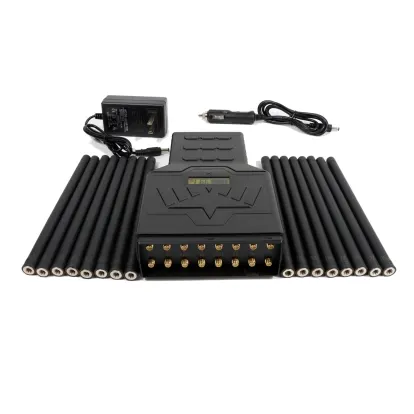道場TOP ネタ一覧 Cell phone jammers block some nasty signals道場
The factors that impede the transmission of Wi-Fi signals
- ◇評価 0ポイント
- ◇閲覧回数 286回
- ◇登録日
- 2023年12月20日
-
- perfectjammer
- 道場主
Lv.14
A WiFi and Bluetooth Jammer Can Prevent Data Theft
It is important to understand that WiFi is available in 2 frequencies, 2.4GHz and 5GHz. While 2.4GHz is by far the most commonly used, some newer routers do include 5GHz.
Bluetooth is within the 2.4GHz band, so any WiFi jammer that covers 2.4GHz is also going to block Bluetooth.

The next important consideration is the size of the coverage area needed for your application. We offer units such as which covers both 2.4GHz and 5GHz to approximately 15 meters, the popular spy camera jammer which covers 2.4GHz WiFi only to approximately 20 meters, or the extremely powerful which covers both, up to 250 meters.
There are some variations in the coverage area depending upon local signal strength, physical environment, etc. Where the signal is weaker, the coverage is greater, and vice versa.
How Far Should WiFi Reach?
Factors like the frequency range, signal strength, and the number of walls or obstacles between your device and the router can lead to variations in the range of the WiFi signal.
When it comes to device coverage, the 2.4 GHz frequency band excels, albeit at a slower speed. Conversely, the 5 GHz frequency band offers faster speeds but has a smaller range, allowing for optimized network performance.
The usual range of a WiFi router is approximately 100 feet indoors and up to 300 feet outdoors in open areas. However, the presence of other devices or materials can cause interference, leading to a notable reduction in this range.
Signal Disturbances and Interference
The WiFi signal acts as the conduit that links your devices to the internet, utilizing a frequency range (2.4GHz or 5GHz) that traverses through the air. Opting for newer equipment that supports the 5 GHz frequency band is crucial due to the shorter range of signals in this band, resulting in a reduced likelihood of interference from other networks compared to older equipment operating on the 2.4 GHz band.
Metal
When it comes to obstructing your WiFi signal, metal is the most problematic material. Its remarkable electrical conductivity enables it to reflect WiFi signals, causing buffering during streaming or videoconferencing, delays in gaming, and frustratingly slow loading times.
Walls (Concrete & Brick)
The effectiveness of walls in blocking WiFi signals varies depending on factors such as the type of wall material and its thickness.
WiFi signals encounter obstacles when trying to penetrate concrete and brick walls. Among the two, concrete walls prove to be more formidable due to their higher density and thicker mass, resulting in a greater ability to block WiFi signals compared to brick walls.
Windows, Glass & Mirrors
It’s generally not recommended to place your router next to a window or a mirror, either. WiFi signals can’t pass through windows, glass, and mirrors because these materials contain a thin layer of metal that reflects the radio waves back instead of allowing them to pass through.
ブログ? そんなの必要ありません! 今日から、いきなりアフィリエイトスタート!
【まにあ道アフィリエイト】まにあ道ならAmazonアソシエイトIDを利用してネタを書くだけで、お気軽に始めていただけます。












 シュリのおすすめネタ
シュリのおすすめネタ
コメントはまだありません。